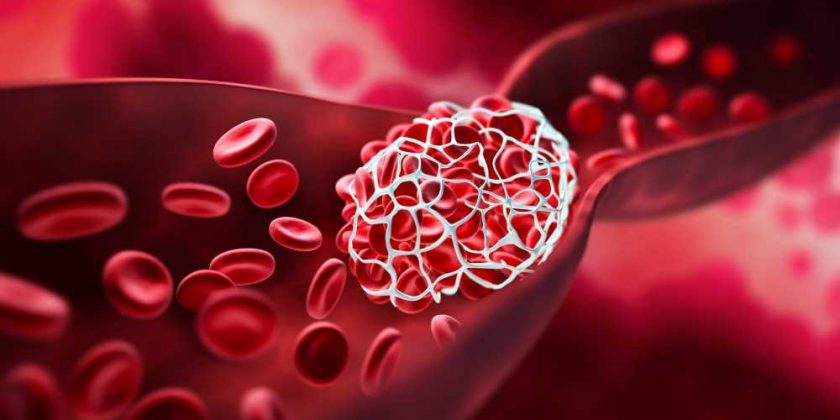In a recent article published in the journal Scientific Reports, researchers performed a prospective observational study in three healthcare centers in Germany to understand the impact of ADAMTS13 activity during coronavirus disease 2019 (COVID-19).
 Study: Generation of potentially inhibitory autoantibodies to ADAMTS13 in coronavirus disease 2019. Image Credit: peterschreiber.media / Shutterstock.com
Study: Generation of potentially inhibitory autoantibodies to ADAMTS13 in coronavirus disease 2019. Image Credit: peterschreiber.media / Shutterstock.com
Background
ADAMTS13, also known as von Willibrand factor (VWF)-cleaving protease, cleaves VWF to prevent the formation of ultra-large VWF multimers. ADAMTS13 deficiency can lead to a condition known as thrombocytic thrombocytopenic purpura (TTP), a rare and life-threatening blood disorder often treated with plasmapheresis.
Recent studies have demonstrated that COVID-19 markedly increases VWF antigen levels which, in turn, exceeds ADAMTS13 processing capacity. Eventually, this leads to the formation of large VWF multimers similar to what occurs in TTP. Thus, the ADAMTS13/VWF antigen (VWF:Ag) ratio can be used as an independent predictor of COVID-19 severity and mortality.
Nevertheless, there remains a lack of research on ADAMTS13 autoantibodies and their role in COVID-19. Recently, two small case series have examined severe COVID-19 patients, in which only one out of the 13 patients exhibited detectable ADAMTS13 antibodies.
About the study
COVID-19 is associated with an increased risk of autoreactivity. In the present study, researchers investigated whether the generation of autoantibodies to ADAMTS13 contributes to the reduced ADAMTS13/VWF:Ag ratio observed in COVID-19.
A total of 156 patients at Ruhr-University Bochum, University of Duisburg-Essen, and Asklepios Klinikum Hamburg Harburg hospitals were included in the current study, 90 of whom were hospitalized due to COVID-19.
Each study participant's blood samples were obtained to measure ADAMTS13 activity, as well as ADAMTS13 autoantibodies exceeding 16 U/mL. A sandwich enzyme-linked immunosorbent assay (ELISA) was used to measure the VWF:Ag ratio, which was calculated as ADAMTS13 (IU/ml)/VWF:Ag (IU/ml) × 100. Sodium dodecyl sulfate (SDS) agarose gel electrophoresis was used for the VWF multimer analysis.
ADAMTS13 autoantibodies during severe COVID-19
ADAMTS13 autoantibodies were observed in nearly one-third of hospitalized COVID-19 patients. ADAMTS13 autoantibody activity was low, thus indicating an inhibitory effect on the protease. Notably, this phenomenon was not observed in intensive care unit (ICU) patients not diagnosed with COVID-19. These findings indicate the potential utility of using ADAMTS13 autoantibody levels to predict COVID-19 severity.
Along with increased VWF release, increased ADAMTS13 autoantibody levels contributed to a decreased ADAMTS13/VWF:Ag ratio. Notably, in the diagnosis of TTP, reduced ADAMTS13 activity and ADAMTS13 autoantibodies in serum are well-established criteria.
None of the patients in the study developed severe thrombopenia, defined as a platelet count of 50,000/µl or less. This indicates that the potential inhibitory effect of apathogenic ADAMTS13 autoantibodies was weaker in COVID-19 than in TTP.
Large VWF multimers accumulate in microthrombi; thus, their reduced concentrations in the blood likely contributed to COVID-19-induced immunothrombosis. SDS agarose gel analyses on samples from patients with COVID-19 confirmed these results.
Other studies have shown that COVID-19 patients exhibit lupus- and rheumatoid arthritis-like antibody patterns. Accordingly, critically ill COVID-19 patients also exhibit hallmarks of B-cell activation and B-cell repertoire (BCR) observed in autoimmune settings.
Severe acute respiratory syndrome coronavirus 2 (SARS-CoV-2) infection increases the risk of thrombotic microangiopathy by two synergistic mechanisms. Due to the excessive release of VWF, the protease activity of ADAMTS13 exceeded the normal limit.
The COVID-19-induced autoreactive inflammatory environment leads to the formation of autoantibodies to ADAMTS13. The circulation of these autoantibodies subsequently reduced ADAMTS13 activity and contributed to the development of immunothrombosis. Both of these mechanisms may increase the risk of ultra-large VWF multimers formation in COVID-19, resembling those formed in TTP.
Conclusions
In the current study, plasma exchange therapy in 25 severe COVID-19 patients with acute respiratory distress syndrome markedly decreased their VWF:Ag ratio and increased ADAMTS13 activity, thereby re-establishing the physiological balance between VWF and its protease.
Thus, the study findings provide evidence of an additional benefit of plasma exchange therapy beyond the attenuation or elimination of circulating cytokines and inflammation for the treatment of COVID-19. Furthermore, considering VWF, ADAMTS13 activity, and ADAMTS13 autoantibodies levels during the diagnostic workup of COVID-19 may also provide important insights into disease severity.
- Doevelaar, A. A. N., Bachmann, M., Hölzer, B. et al. (2023). Generation of potentially inhibitory autoantibodies to ADAMTS13 in coronavirus disease 2019. Scientific Reports 13(10501). doi:10.1038/s41598-023-37405-5
Posted in: Medical Science News | Medical Research News | Medical Condition News | Disease/Infection News
Tags: Acute Respiratory Distress Syndrome, Antibodies, Antibody, Antigen, Arthritis, Assay, Autoantibodies, Blood, Blood Disorder, Cell, Coronavirus, Coronavirus Disease COVID-19, Cytokines, Diagnostic, Electrophoresis, ELISA, Enzyme, Gel Electrophoresis, Healthcare, Intensive Care, Lupus, Mortality, Plasmapheresis, Platelet, Research, Respiratory, Rheumatoid Arthritis, SARS, SARS-CoV-2, Severe Acute Respiratory, Severe Acute Respiratory Syndrome, Syndrome

Written by
Neha Mathur
Neha is a digital marketing professional based in Gurugram, India. She has a Master’s degree from the University of Rajasthan with a specialization in Biotechnology in 2008. She has experience in pre-clinical research as part of her research project in The Department of Toxicology at the prestigious Central Drug Research Institute (CDRI), Lucknow, India. She also holds a certification in C++ programming.
Source: Read Full Article
